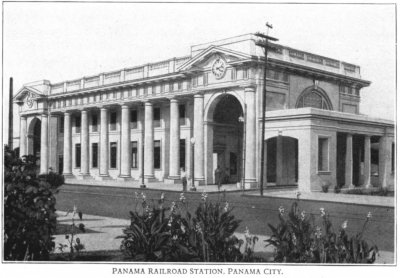Tour Recommend
Portobelo Tour
Late at night, Morgan ordered an attack. The canoes moved swiftly and landed at a lookout post some three miles from Portobello. A Spanish canoe that had been sent to observe the strange ship saw them and raced back to the city to sound the alarm. Morgan's men had to move quickly. They had captured a guard at the lookout post and they bound his hands, making him lead the way into town. When they reached the approach to the city as dawn broke, they paused: there stood Santiago Castle guarding the entrance. But their guide assured them that the castle was in disarray and the pirates rushed across the open ground to the town. The cannon gunners in Santiago only got off one shot, which sailed harmlessly over the attackers' heads
Morgan's men rushed into town as dawn broke on July 11, 1668, firing at anything that moved. As the defenders frantically struggled to get organized, Morgan ordered sharpshooters to the top of a nearby hill which was actually higher than Santiago Castle. From their vantage point, the skilled buccaneers picked off any defender foolish enough to raise his head, effectively neutralizing the threat posed by the castle.
Fall of San Gerónimo Castle
There were some defenders in unfinished San Gerónimo castle, located in the harbor and surrounded by water. They fought for a while, but there were too few of them. Once some freed English prisoners (who had been forced to work on the construction of the castle) showed the buccaneers that the water between the town and fort was only knee-deep, a force of invaders rushed the castle, where the garrison of approximately eight men begged for quarter. The prisoners were bound and put in the church.
Fall of Santiago Castle
Once the city and San Gerónimo had been secured and all of the prisoners under guard in the church, Morgan turned his attention to Santiago castle. He sent more sharpshooters to the hill and put more riflemen in the houses nearest the church. The castle defenders were in a bind: their cannons were in poor shape and they were reluctant to fire into the city anyway.
When a frontal assault was driven back, Morgan got creative. He took some important prisoners including the mayor, some friars and nuns and some old men and women and marched them towards the castle, his own men behind them. One cannon fired, injuring two Spanish friars and killing one pirate, but no more. When they reached the gates, the pirates began hacking at them with axes.
Meanwhile, a second force of buccaneers had found some ladders and scaled the wall on the other side of the castle. There was some desperate fighting, but by 10:00 am the castle had fallen. More than half of the defenders had been killed and most of the others were wounded. The officer in charge of the cannons was ashamed of his own incompetence and begged the pirates to kill him: one happily obliged with a pistol-shot.
Fall of San Felipe Castle
Morgan controlled the town and the fort of Santiago, but he still could not get his fleet into the harbor while there were enemies in San Felipe castle on the other side of the bay. There were some 50 well-armed defenders there, but they had no food. It turns out that food was sent over daily from the town, and the castle had no stores. Still, young Castellan Alexandro Manuel Pau y Rocaberti decided to fight.
The buccaneers took their canoes across the bay and got into position for an assault. When some English pirates made it to the base of the wall and began trying to burn down the gates, young Castellan Pau panicked and invited invading captains into the castle for a parley to determine terms of surrender, much to the shock and chagrin of the other Spanish in the castle who wanted to fight. Still, once the pirates were inside there was no going back.
Under the terms of surrender, the soldiers were allowed to take the road to Panama and keep their swords. Castellan Pau was himself made prisoner, and drank poison that night, ashamed of his cowardice. Had San Felipe held out, the results of Morgan's attack might have been very different.













